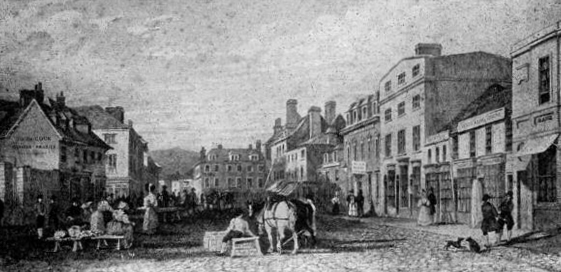
Discover Your Ancestors
Two critically acclaimed publications are available to family history researchers - the annual print magazine, Discover Your Ancestors, and the monthly online magazine, Discover Your Ancestors Periodical. Click here to subscribe.Truro

Today Truro is Cornwall’s county town and its only city, the southernmost in mainland Britain.
The earliest records and archaeological findings of a permanent settlement in the Truro area date from Norman times. A castle was built there in the 12th century by Richard de Lucy, Chief Justice of England in the reign of Henry II, who for his services to the court was granted land in Cornwall, including the area surrounding the confluence of the two rivers. The town grew in the shadow of the castle and was awarded borough status to further economic activity. The castle has long since disappeared – it was in ruins by 1270 and the motte was levelled in 1840. Today Truro Crown Court stands on the site.
By the start of the 14th century Truro was an important port, due to its inland location away from invaders, prosperity from the fishing industry, and a new role as one of Cornwall’s stannary towns for assaying and stamping tin and copper from Cornish mines. The Black Death brought a trade recession and an exodus of the population that left the town in a very neglected state. Trade gradually returned and the town regained prosperity in the Tudor period. Local government was awarded in 1589 by a new charter granted by Elizabeth I, giving Truro an elected mayor and control over the port of Falmouth.
During the Civil War in the 17th century, Truro raised a sizeable force to fight for the king and a Royalist mint was set up. Defeat by the Parliamentary troops came in 1646 and the mint was moved to Exeter. Later in the century, Falmouth was awarded its own charter, giving it rights to its harbour and starting a long rivalry between the two towns. The dispute was settled in 1709 with control of the River Fal divided between them.
Truro prospered in the 18th–19th centuries. Industry flourished through improved mining methods and higher prices for tin, and the town attracted wealthy mine owners. Elegant Georgian and Victorian townhouses were built, such as those seen today in Lemon Street, named after the mining magnate and local MP Sir William Lemon. Truro became the centre for society in the county.
Throughout those prosperous times Truro remained a social centre, and many notable people came from there. Among the noteworthy were the explorer Richard Lander, Humphry Davy, inventor of the miner’s safety lamp, and Samuel Foote, an actor and playwright from Boscawen Street.
Truro's importance increased later in the 19th century, when it had an iron-smelting works, potteries, and tanneries. The Great Western Railway arrived in the 1860s, providing a direct link to London Paddington. The Bishopric of Truro Act 1876 gave the town a bishop, and subsequently a cathedral. The next year Queen Victoria granted Truro city status. The New Bridge Street drill hall was completed in the late 19th century.
The start of the 20th century brought a decline in mining, but the city remained prosperous and continued to develop as the administrative and commercial centre of Cornwall.
Exclusive census analysis from data at TheGenealogist reveals that common surnames in Truro in the 19th century included Pascoe, Rowe, Davey, Stephens, Allen, Harris, Mitchell and James. Between 1841 and 1911 the county’s population rose from 3,000 to 32,000.
Truro Records
Leading data website TheGenealogist.co.uk has a wealth of records for Truro and its county of Cornwall. Here is a quick run-down of what you can find (in addition to national collections):
- Trade directories: two directories covering Cornwall from 1873 and 1896.
- Census records: Truro records for every census from 1841 to 1911.
- Nonconformist registers: Nonconformist chapels and meeting houses across Truro and Cornwall are covered in the site’s collections.
- Land owners: the site’s huge collection of tithe commutation records includes Truro, along with tithe maps; plus an 1873 survey of Welsh and English landowners includes the region.
- Many people from Truro can be found in Prerogative Court of Canterbury (PCC) Wills 1384-1858.